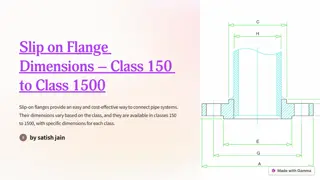
Understanding Factor Markets and Pricing in Economics
Explore the concepts of factor markets, labor markets, and factor pricing in economics. Learn about the demand and supply of factors of production, functional distribution of income, and theories of factor price determination. Dive into discussions on rent, wages, interest, and economic profit in the context of economic theory.
Download Presentation

Please find below an Image/Link to download the presentation.
The content on the website is provided AS IS for your information and personal use only. It may not be sold, licensed, or shared on other websites without obtaining consent from the author. If you encounter any issues during the download, it is possible that the publisher has removed the file from their server.
You are allowed to download the files provided on this website for personal or commercial use, subject to the condition that they are used lawfully. All files are the property of their respective owners.
The content on the website is provided AS IS for your information and personal use only. It may not be sold, licensed, or shared on other websites without obtaining consent from the author.
E N D
Presentation Transcript
The factor market The Labour market 6thof November
Factor Market Factor Markets refers to the markets where services of the factors of production are bought and sold Labor Markets Capital Markets The markets for raw materials The market for management and entrepreneurial resources. The demand for and supply of factors Rent Wages Interest Economic profit
Factor Market The demand for a factor is derived (Indirect) There is demand for land because there is demand for rice. The supply of factors of production Depends on the system of property rights The toil trouble involved in the work (Depends on the leisure preference)
Factor Pricing In the free market (no government intervention and trade union pressure) the price of the factors of production are dependent on supply and demand. Output determination commodity pricing Income distribution factor pricing Two types of income distribution Functional distribution of income (Micro) Personal distribution of income (Macro)
Functional distribution Each factor is paid on the basis of the function performed by it. Land owners Rent Workers Wage Suppliers of financial capital interest Entrepreneurs profit. Two main theories of factor price determination Supply Demand Theory The marginal productivity theory of factor demand
Supply Demand Theory When wages increase Labor increases When Rent Increases More people give their property for rent
The marginal productivity theory of factor demand This suggests that an individual firm pays a factor on the basis of its Marginal product MR = MC However, there are other factors. A rupee spent on labor cannot be spent on capital Therefore firms have to choose their best option. This it the law of EQUI-MARGINAL RETURN
Rent Commercial Rent Payment for the use of property Economic Rent Is the reward for the uses of the services of the land. The Supply of the land is perfectly inelastic because the quantity available is fixed and determined by nature. Supply has no influence in the determining of rent. Demand is the only determinant of rent Perfectly inelastic so as demand increases/decreases rent will increase/decrease. Economic Rent offers no incentive system. Since Land is a gift of nature , any payment received by the owner is called PURE or ECONOMIC RENT
Interest You give me Rs 2000 today and in a year I will give you Rs 500 as interest and the original Rs.2000 (500/2000)*100 = 25% Bank interest is 8% So my economic profit is (25-8) = 17% Banks sets Savings rates and Borrowing rates and the bank keeps the difference as revenue. Rate of Interest = Interest *100 Principal
Profit Profit is a return on entrepreneurial ability or a reward for risk taking. Economic role of profits Profits as a signal to a resource owner Profits are economics signals letting people know to enter markets or in cases of losses to leave markets. Profits are motive for efficiency Gives incentive to firms to reduce cost Profits as reward The prospect of earning rewards are the driving force behind development Innovation Profit is the prime mover of capitalistic economies.
Wages The wage rate refers to the earning per hour of labor. The wage rate divide by the price index gives the Real Wage Rate The level of real wages depends on the productivity of labor Real wages are higher The greater the amount of capital available (hedge fund managers) The more technology available (scientists) The availability of natural resources (oil)
Wages By adding each firms demand for labor we get the Market demand for labor The market supply for labor depends on the Size of the population The proportion of the population in the labor force The state of the economy The level of real wages Competitive equilibrium real wage rate is determined by the intersection of the market demand and supply curves. Then the firm hires labor until the MR = the wage rate
Labor Unions Labor Unions try to increase wages in 3 ways They try to increase the demand for labor by increasing productivity By advertising union made products By lobbying for the restriction of imports Increase wage by restricting the supply of labor High initiation fees Long apprenticeships Require that firms higher only union workers. Increase wages by bargaining with employees Threats of strikes Go slow campaigns.
Minimum Wages Group Discussion What effect does minimum wages have on the economy? Should Sri-Lanka have a minimum wage? If no, why not? If yes, explain and how much should it be set at?
CEO Salaries Cash/Base Salaries Bonuses Stock Options Stock Ownership






















